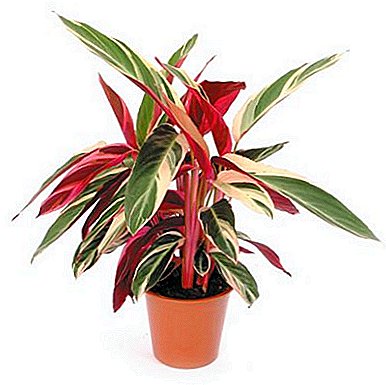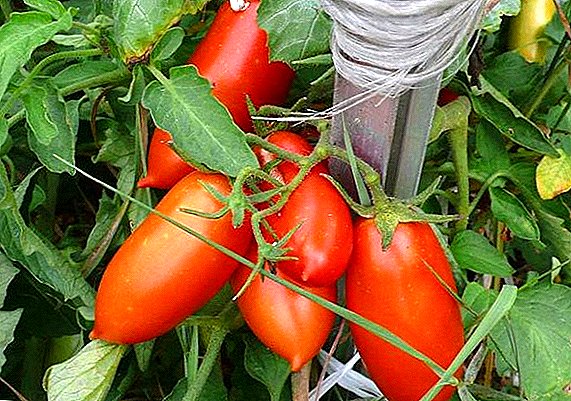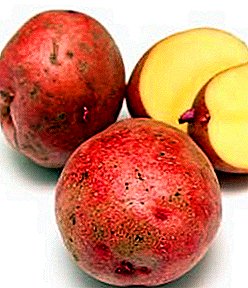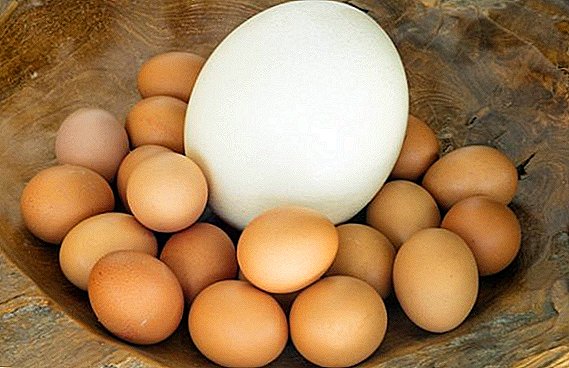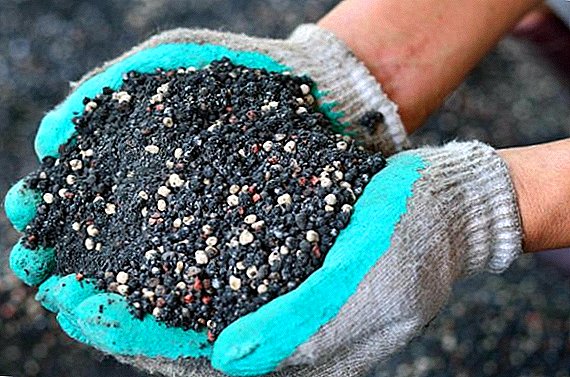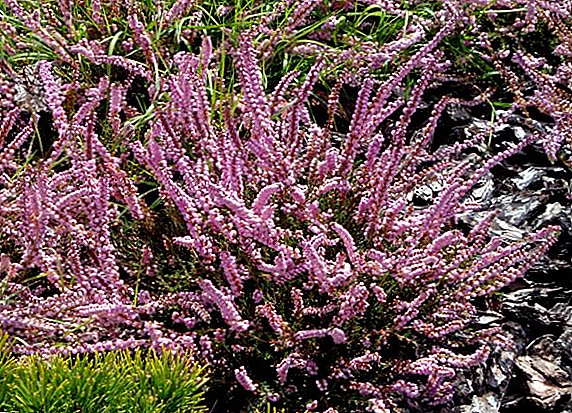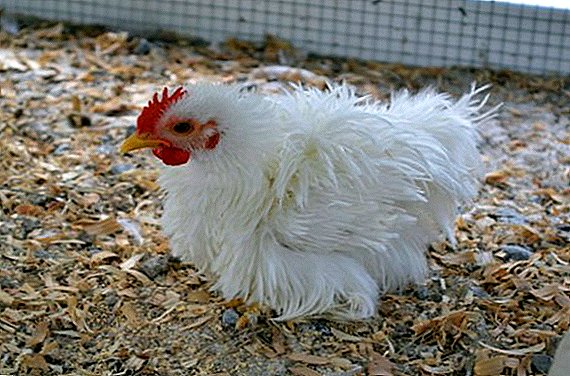 Often, at first glance, healthy laying hens cease to be carried for no apparent reason. This situation may arise from the stress that chickens experience under the influence of various factors. Today we look at the main causes of stress in chickens and the best ways to deal with it.
Often, at first glance, healthy laying hens cease to be carried for no apparent reason. This situation may arise from the stress that chickens experience under the influence of various factors. Today we look at the main causes of stress in chickens and the best ways to deal with it.
Stress factors
Chickens can sometimes experience nervous tension that occurs due to stress factors — extreme or extreme stimuli that affect individuals. The stress response of the body of chickens is manifested in different ways and depends on the individual.
The condition may be accompanied by poor appetite, anxiety, increased breathing and heartbeat, muscle tremors, fever, poor egg production, susceptibility of birds to diseases.
Feed
Stress in birds may develop due to an improper diet, when chickens are undernourished or overeat.
Learn how to make food for chickens at home, how much feed a laying hen needs per day, and how and how much to feed domestic chickens.Such an organism response can cause poor nutrition, an abrupt change of foods, and a lack of water in the laying ration. Most often, the body is depleted and stress arises in high-producing layers that lack feed or have an unbalanced diet.
 To the detriment of their health, they continue to rush, and over time this leads to a catastrophic reduction of muscles, when the keel part is distinctly distinguished.
To the detriment of their health, they continue to rush, and over time this leads to a catastrophic reduction of muscles, when the keel part is distinctly distinguished.We advise you to read about what can be given to chickens and what is not, how to give grass, bran, live food, fish oil and yeast to chickens, and whether bread, salt, garlic and foam can be given to chickens.
Such layers are susceptible to infectious diseases and often die from exhaustion. A chicken may be under stress if it is suddenly stopped feeding on combined feed and switching to natural food, or changing one feed to another that has not been previously used.
Digestion processes in the body can be disturbed and provoke stress if the amount of protein in the diet exceeds the norm, or when technical fats are added to the diet ration, compound feed with the content of coarse non-digestible films from grain or bran. 
Technological
Stress under the influence of technological factors is most common among chickens and occurs during periods when you weigh individuals, move them from one habitat to another, in violation of the standards of birds in the cages.
Often birds are caged in cages in greater numbers than expected, which is associated with space savings to reduce the cost of acquiring additional cages or equipment. This situation leads to violations of sanitary norms, provokes the development and rapid spread of infections and viruses.
Familiarize yourself with the pros and cons of keeping chickens in cages, as well as learn how to make a cage for chickens with your own hands.
If we exceed the recommended norms for placing individuals in a cage, the temperature in poultry houses will increase by 20%, as a result, the air will over-accumulate with microorganisms, and their number will increase by 1.5-2 times.  Under poor poultry conditions, egg production significantly decreases, stress has a negative effect on fertility and hatchability.
Under poor poultry conditions, egg production significantly decreases, stress has a negative effect on fertility and hatchability.
Biological
Biological factors for stress are infections that cause serious illness, as well as prophylactic administration of vaccines.
Scientists conducted a study that proved that when chickens infected their body with bacteria S. enteritidis in combination with stress caused by noise or moving to another place, the risk of morphological and hormonal changes in birds increases.
Read more about how to conduct a complex of vaccinations for chickens.
In the process of prophylactic vaccination, several stressful procedures occur at once, in the form of trapping individuals, administering a vaccine with a syringe, or rubbing funds into feather follicles.  When vaccinating healthy individuals, they normally respond to a little stress, which soon passes without any consequences. If the birds are weakened, then with the introduction of vaccines they may develop complications, even death due to severe stress is not excluded.
When vaccinating healthy individuals, they normally respond to a little stress, which soon passes without any consequences. If the birds are weakened, then with the introduction of vaccines they may develop complications, even death due to severe stress is not excluded.
Did you know? The vaccination method was discovered completely by chance in 1880 by the French scientist Louis Pasteur. At this time, the scientist worked on the problem of chicken cholera and, after identifying the causative agent, he forgot to remove it from the thermostat. The virus was dried and accidentally injected into the chickens. And what a surprise it was when the test subjects fell ill with a mild form of the disease and survived!
Traumatic
Traumatic factors consist of bruises, rasklevov, postoperative injuries, which are caused by the processes of debikirovaniya, trimming the crest, wings. Because of the imperfections of the cells in which individuals live, Namins can occur on the chest and legs of chickens, which causes pain and stress in sick individuals.  Injury as a result of veterinary intervention, for which sharp objects are used, becomes the cause of the onset of biting, which causes great stress to the body.
Injury as a result of veterinary intervention, for which sharp objects are used, becomes the cause of the onset of biting, which causes great stress to the body.
Mass injury can occur in several cases:
- in the process of moving chickens from the cage to the cage;
- because of the foot grid, where chickens sometimes get;
- when the scraper conveyor is activated to remove the litter;
- when chickens accidentally fall out of the cage.
Find out why chickens peck at each other, and why chickens peck at rooster and each other.
Rasklev is a strong stress for individuals that are exposed to it. The most aggressive birds are often sent for debicking, which consists in trimming the upper and lower parts of the beak so that, as a result, they cannot inflict severe injuries on their neighbors.
If a parent broiler flock is contained in one cage, this may result in the rejection of some hens due to injuries received during the rooster's sowing.  Such hens have low productivity due to the resulting stress, so in order to prevent a similar situation, chickens are recommended to trim the claws and cauterize the spur hillocks in the males.
Such hens have low productivity due to the resulting stress, so in order to prevent a similar situation, chickens are recommended to trim the claws and cauterize the spur hillocks in the males.
Psychological
Psychological factors provoking stress include hierarchical processes in the herd, which entail a fight and pecking. Chickens can fight for food and water, for a plot in a chicken coop, if they experience a shortage of food or space.
Important! In order to exclude a possible struggle for food and water, install more than one feeder and drinker, but 2-3, so that all chickens have the opportunity to eat when they want.
Conditions are normal when the young growth in the process of growth and then for the rest of their life lives in the same cages or in the chicken coop, without moving, which will ensure maximum productivity of the hens.  Stress factors are measured on a 4-point scale (the degree of stress equals the number of points: the higher the score - the more stress):
Stress factors are measured on a 4-point scale (the degree of stress equals the number of points: the higher the score - the more stress):
- 4 points - poor diet, water shortage, hierarchical development in the herd, poor quality care, diseases associated with infections, inconsistency of the microclimate indicators;
- 3 points - increased egg production, temperature fluctuations;
- 2 points - injury and vaccination;
- 1 point - the growth of young stock in the initial stages of egg production.
What to do
When chickens have developed stress under the influence of the previously described factors, you can use several methods that will solve the problem.
First way
In the first variant, it is recommended to prevent the development of stress in chickens by minimizing the influence of stress factors associated with the growing technology.  These include: the process of introducing a vaccine, moving birds. It is especially recommended to protect birds from possible stress in some periods of their life.
These include: the process of introducing a vaccine, moving birds. It is especially recommended to protect birds from possible stress in some periods of their life.
Important! It is worth remembering that there are also sources of stress that cannot be eliminated, so scientists are developing special concepts for breeding individuals with enhanced adaptive properties to specific conditions of detention on an industrial scale.These periods include:
- first 5 days after hatching;
- active puberty;
- vaccine reaction;
- transportation, movement.

Second way
In the second variant, it is recommended to achieve an increase in individuals of natural resistance by:
- breeding for breeding high-quality eggs;
- the division of eggs by weight into several categories;
- compliance with the technology and incubation process;
- rejection of substandard chickens;
- compliance with recommended requirements in the process of moving and placing individuals in poultry houses;
- providing birds with food - with special feeds, taking into account the age of individuals;
- ensuring unhindered access to food and water;
- observance of the main recommendations with regards to the indoor climate and the density of poultry accommodation in cages.
Third way
This method is to use anti-stress medications to protect the birds from stress factors and reduce their effect.  At this time, vitamin premixes are also added to the diet.
At this time, vitamin premixes are also added to the diet.
Important! The use of drugs as a prophylaxis always entails high costs and is not always cost-effective.
Among the anti-stress drugs for chickens distinguish the use of three types of drugs:
- Stress protectors - they allow to weaken the influence of stressful situations on a chicken through the suppression of the nervous system at the exact moment when it is affected by unfavorable factors. In this case, drugs are represented by neuroleptic, tranquilization, sedatives. Among the effective drugs are the use of "Triftazin", "Reserpine", "Phenazepam", "Amizil".
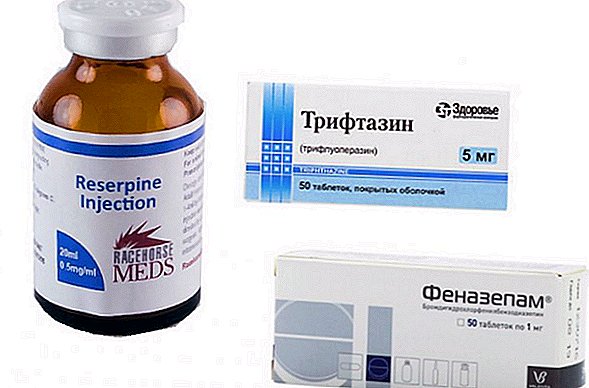
- Adaptogens - are drugs that cause moderate irritation to the body, contributing to the activation of the nervous and endocrine systems in order to prepare the body for possible stressful situations. The most effective is the use of "Dibazol", "Methyluracil".
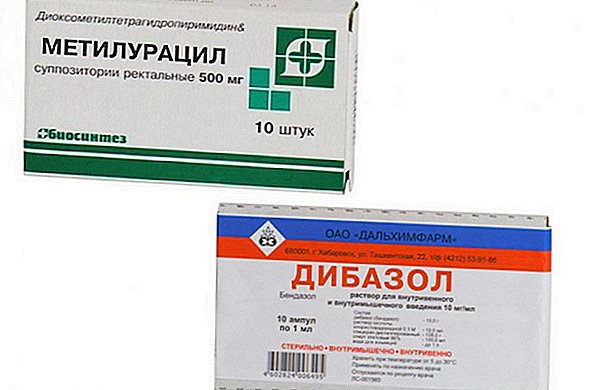
- Sympathetic remedies - used for the treatment of chickens, presented in the form of heart, laxatives, diuretics, their main task is to have a regenerating effect on the body's systems affected by the effects of stress factors. Immunomodulators in the form of Katozal, Levamisole, Izamben, Stimadena, Kamizola, Dimefosfona are used as prophylaxis.

Due to the fact that metabolic processes in the body during stress flow more intensively, the chicken requires an increased amount of vitamins. In order to have a preventive effect on the occurrence of stress or to reduce undesirable consequences, it is recommended to add an additional amount of vitamins to the diet.
It will be useful for poultry farmers to read about whether a rooster is needed for chickens to carry eggs, when young pullets begin to rush, why chickens don’t carry eggs and peck badly, how many days the chicken incubates eggs, what vitamins the hens need for eggs.
The previously used dose of vitamins is increased by 1.5-2 times. They allow the body to provide the necessary amount of energy, increase resistance to stressful situations.
The most effective vitamins in this case include vitamin C, which allows to perform antioxidant functions and reduce the stresses associated with exceeding the norms of the temperature regime. Vitamin added in an amount of from 40 to 100 mg per 1 kg of feed.  The tool allows you to increase the viability and egg production of chickens, a good effect on the immune system. Vitamin A also has an anti-stress effect on the body and is used as an additive in feed to increase the overall resistance of the body and accelerate the growth of chickens.
The tool allows you to increase the viability and egg production of chickens, a good effect on the immune system. Vitamin A also has an anti-stress effect on the body and is used as an additive in feed to increase the overall resistance of the body and accelerate the growth of chickens.
Did you know? Stress in chickens can cause egg formation in the egg. There have been many cases in the world when a sudden shock in a chicken broke the contraction of muscles and returned an already formed egg through the oviduct in the opposite direction, where at that time a new egg was already forming. Thus, the returned egg was enveloped with protein and covered with another layer of shells.Thus, stress in chickens is a fairly common phenomenon and may develop when some stress factors affect the avian organism. In order to avoid possible problems, it is necessary to comply with the standards of microclimate, density of content, feeding ration and follow the basic recommendations for the care of chickens.






